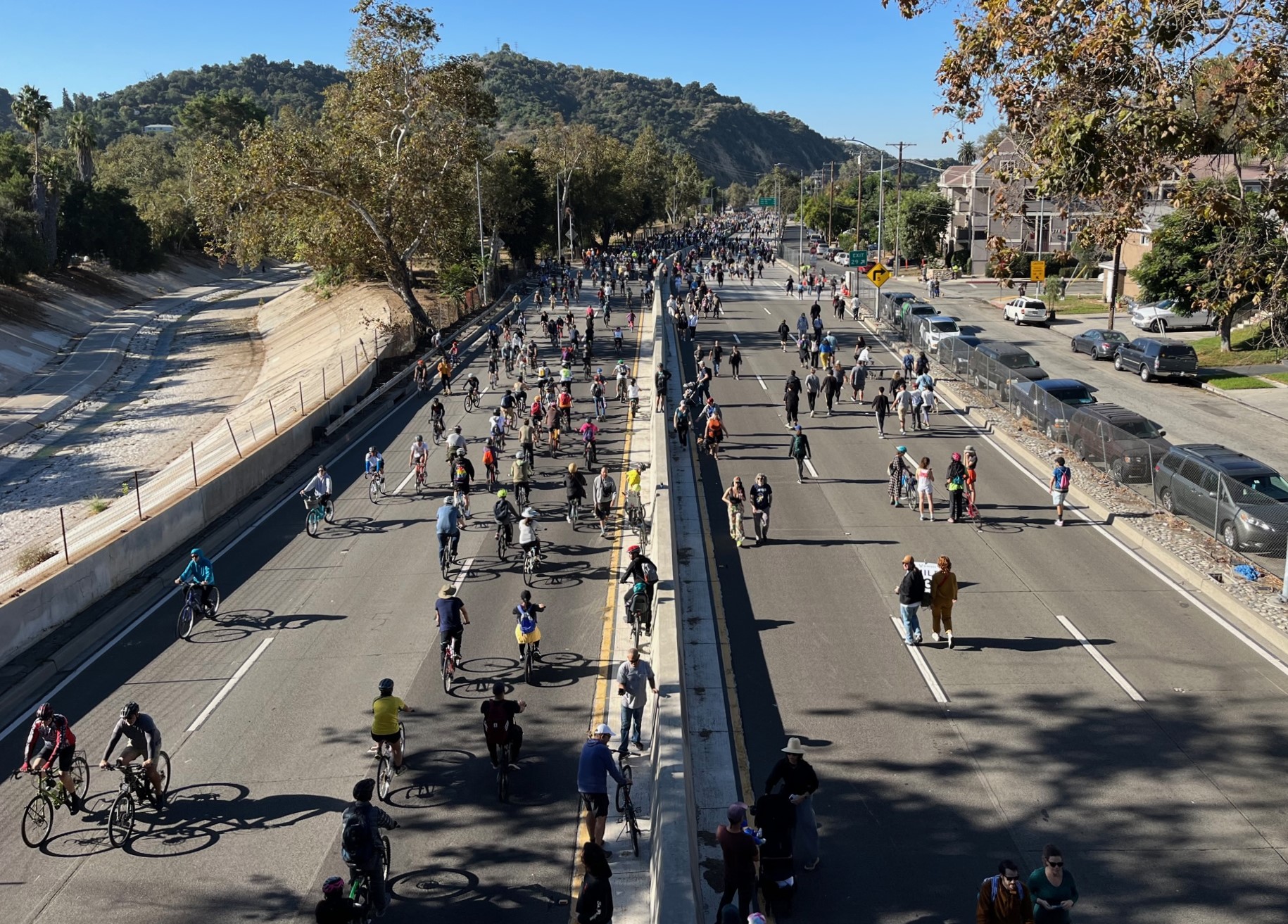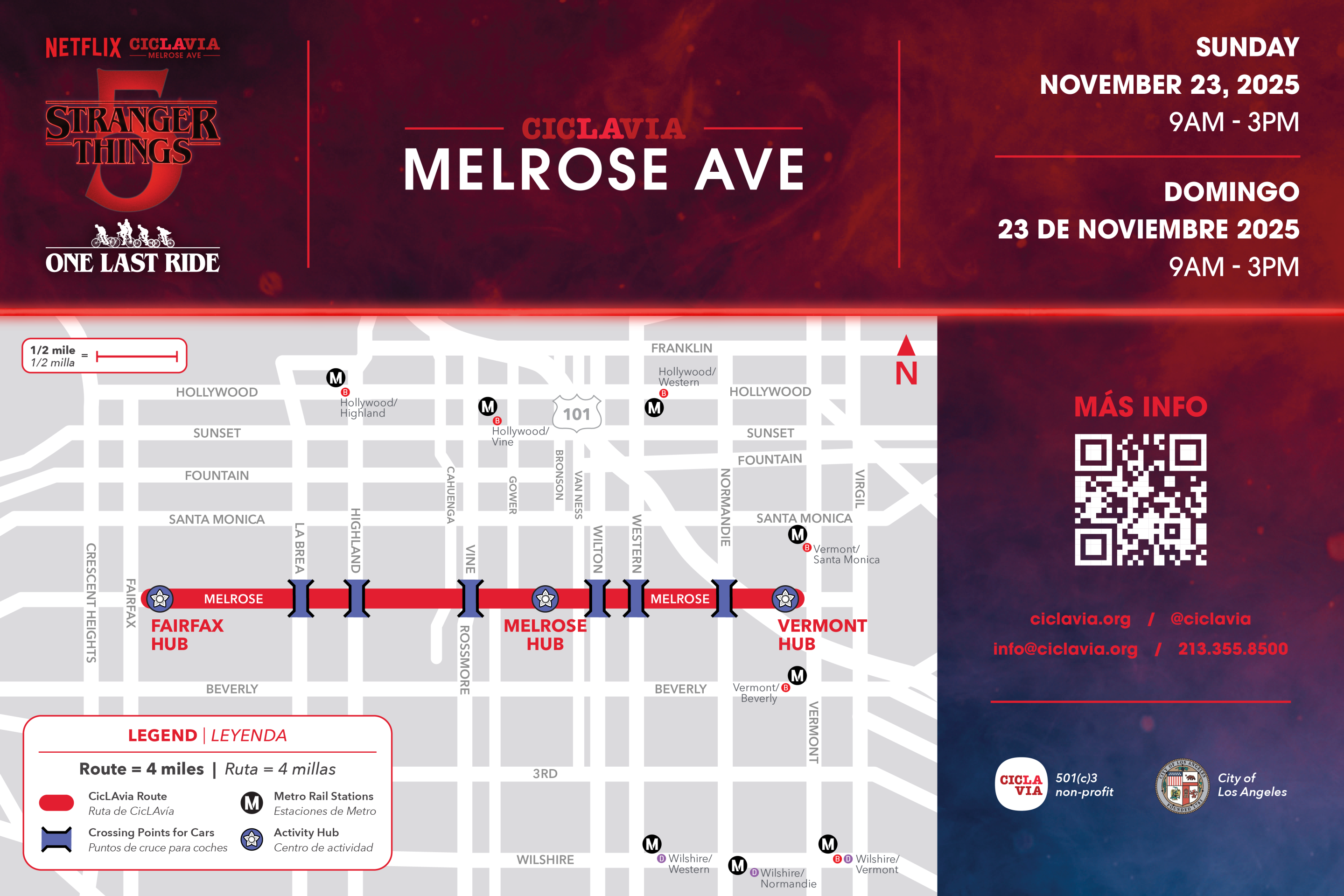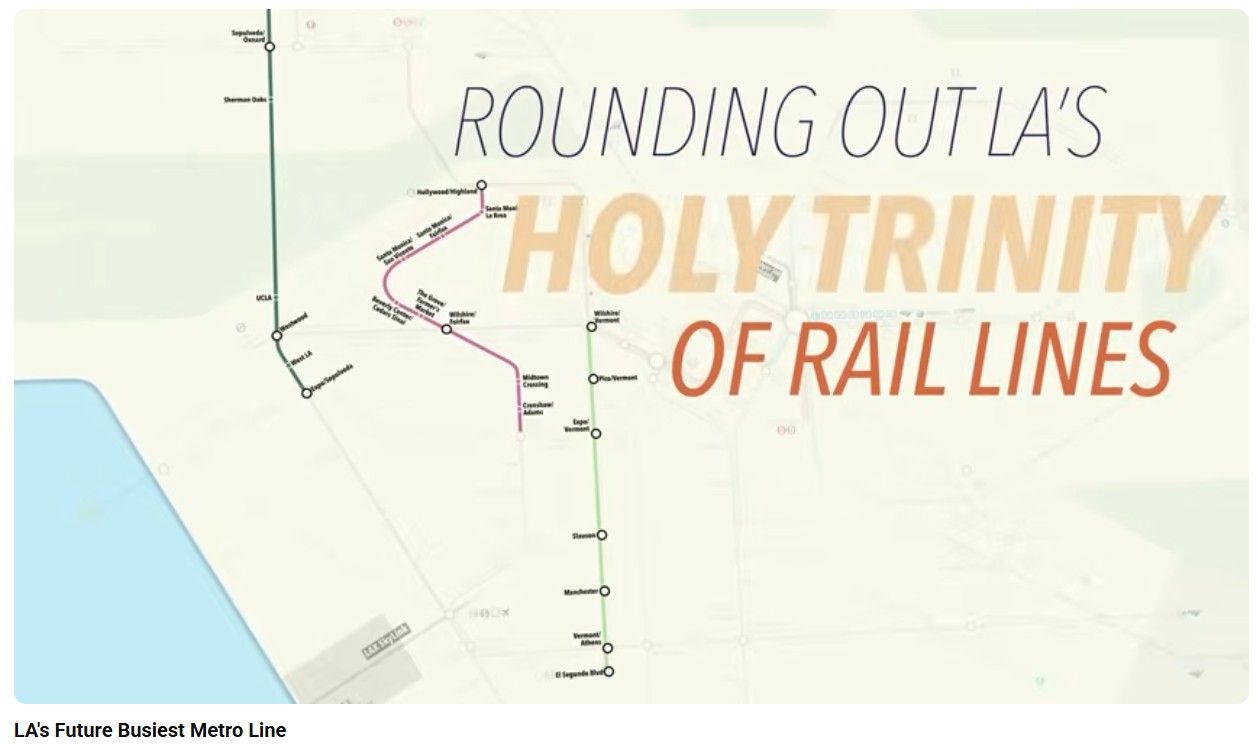(There's a lot of great bike and walk improvements happening in Long
Beach, so L.A. StreetsBlog will cover it in two parts, for now. Today's
article features the past and present; next Friday will feature
exciting plans for the future.)
 All Photos by Joe Linton unless otherwise stated.
All Photos by Joe Linton unless otherwise stated.LONG BEACH'S LIVABLE COMMUNITY AGENDA
Long Beach is the 36th largest city in the United States and the 6th
largest city in California. It is, however, Los Angeles County's second
most populous city; at a half-million people it's about 1/8th of the
city of L.A.'s four million. It's just this sort of comparison that
Long Beach doesn't want to hear.
Long Beach, in looking to differentiate itself from Los Angeles, and
even from adjacent Orange County, has embarked upon an ambitious and
for-Los-Angeles-County-
Beach wants to become known as great place for bicycling and walking.
The city, of course, sees this as desirable for the health and
well-being of its residents, and as good for the environment... but
it's also an economic development strategy. If Long Beach is to attract
and retain companies and workers, then it needs to be able to compete.
The city has decided that livability will make it competitive.
The Livable Community Agenda has the broad support of Long Beach's City Council and is a top priority for its city manager.
Long Beach has plenty of infrastructure that's already conducive to
biking and walking. It has a historic downtown, still relatively
intact, despite decades of car-centric redevelopment. It has
significant density, especially in its southern beach-proximate
formerly-street-car suburbs. It's well-served by transit, including the
Metro Blue Line and Long Beach Transit. The city is surrounded on three
sides by bike paths: on the beach and the Los Angeles and San Gabriel
Rivers.
 Charlie Gandy and Sumire Grant
Charlie Gandy and Sumire GrantENTER CHARLIE GANDY
Long Beach's Transportation Programs Officer Sumire Grant embarked
upon a nationwide search for a leader that could spearhead Long Beach's
new bike/ped agenda. The city made a really smart move bringing in
Charlie Gandy as its mobility coordinator earlier this year. Gandy is a
nationally prominent bicycling proponent, who played a huge role in
fostering livability in Austin Texas (which helped differentiate that
city from Dallas and Houston.)
Charlie Gandy immediately helped the city step up implementation of its 2001 Bicycle Master Plan.
In the past 6 months, the city has striped 15 miles of new bike lanes,
in some cases removing parking and/or car lanes. It has mostly
completed the facilities designated in its worthwhile, but
less-than-visionary, master plan.
Then Long Beach really got down to business.

LIFE IN THE GREEN LANE
StreetsBlog readers may remember that in June 2009 Long Beach made a big splash with their innovative green-stripe sharrow lanes, based on a design piloted in Salt Lake City.
These handsome lanes extend 15 blocks on 2nd Street in the heart of
Long Beach's very popular Belmont Shore commercial district. The sharrow lane makes current law explicit: bicycles and cars share the street; bikes take the lane and stay out of the door zone.
It may not be intuitively obvious, but the city's primary goal for
these lanes was actually reducing bike-ped conflicts. Belmont Shore is
a very popular shopping street, with sidewalks nicely very crowded with
pedestrians. Pre-sharrow counts showed that 42% of bicyclists on 2nd
Street choose to ride on the sidewalk. The same counts showed 48% of
bicyclists riding in the door zone, so another project goal was to get
bicyclists to take the lane. Though often favored by newer,
less-confident bicyclists, sidewalk riding and door zone riding are
actually much more dangerous than riding in the middle of the lane.
The city recently completed post-sharrow counts and the results are very promising! Overall, bicyclist volumes have increased by 29%
- the daily average went from 414 to 538. Sidewalk bicycling declined
by 17%. Door zone riding declined by 7%. Cyclists taking the lane
increased 22% - from 12% to 34%. No bike-ped or bike-car crashes have
been reported. Anecdotally, it appears that cars are tending to use the
left lane, which is making parallel parking easier and safer, too. The
lanes are very comfortable for pairs of cyclists to ride side-by-side.
Merchants and others were initially skeptical, fearing that moving
cyclists off the sidewalk would result in car-bike crashes. Some members of the
business association are already asking if the project, a 1-year pilot,
can be made permanent. Sharrow lanes have been requested by businesses
from other Long Beach commercial areas, including 4th Street, Bixby
Knolls, and Downtown.
Though their numbers have decreased, many riders are still on
sidewalks or in door zones, so the city plans to launch an educational
campaign. The city is also currently designing a project that would
extend 2nd Street's livability interventions eastward into the Naples
neighborhood. That project tentatively includes removing a car lane,
widening sidewalks, and adding an eastbound bike lane and a westbound
green sharrow lane.

TRAFFIC CALMING DOWNTOWN
Yesterday, workers were putting the finishing touches on a smart small traffic calming project at the corner of 1st Street and Linden Avenue in Downtown Long Beach. Both of these are two-lane roads with diagonal parking. The city installed a pair of landscaped curb extensions (also called bulb-outs.)
Curb extensions narrow the roadway, creating shorter and safer
pedestrian crossings; the narrower roadway psychologically cues drivers
to slow down.
With the diagonal parking, curb extensions can free up quite a bit
of real estate. Long Beach's project has plenty of landscaping, wider
sidewalks and even room for outdoor dining for the adjacent Village Grind coffee shop and Utopia restaurant.

A closer look at the project reveals a series of circular metal
objects in the street. It turns out that these are actually retractable
bollards, located at both ends of the block. The city can easily raise
these bollards up to create a 1-block ciclovia-type space for festivals, farmers markets, and the like.
Cars were taking their turns pretty slowly. Carefree pedestrians and
bicyclists were easy to spot. Coffee drinkers were sitting, sipping and
watching. It all feels very civilized.
COMING NEXT FRIDAY - Part 2: What's underway for the Long Beach's
near future: a tale of cycletracks, bicycle boulevards, traffic
circles, federal stimulus money for bikes, and much more.






